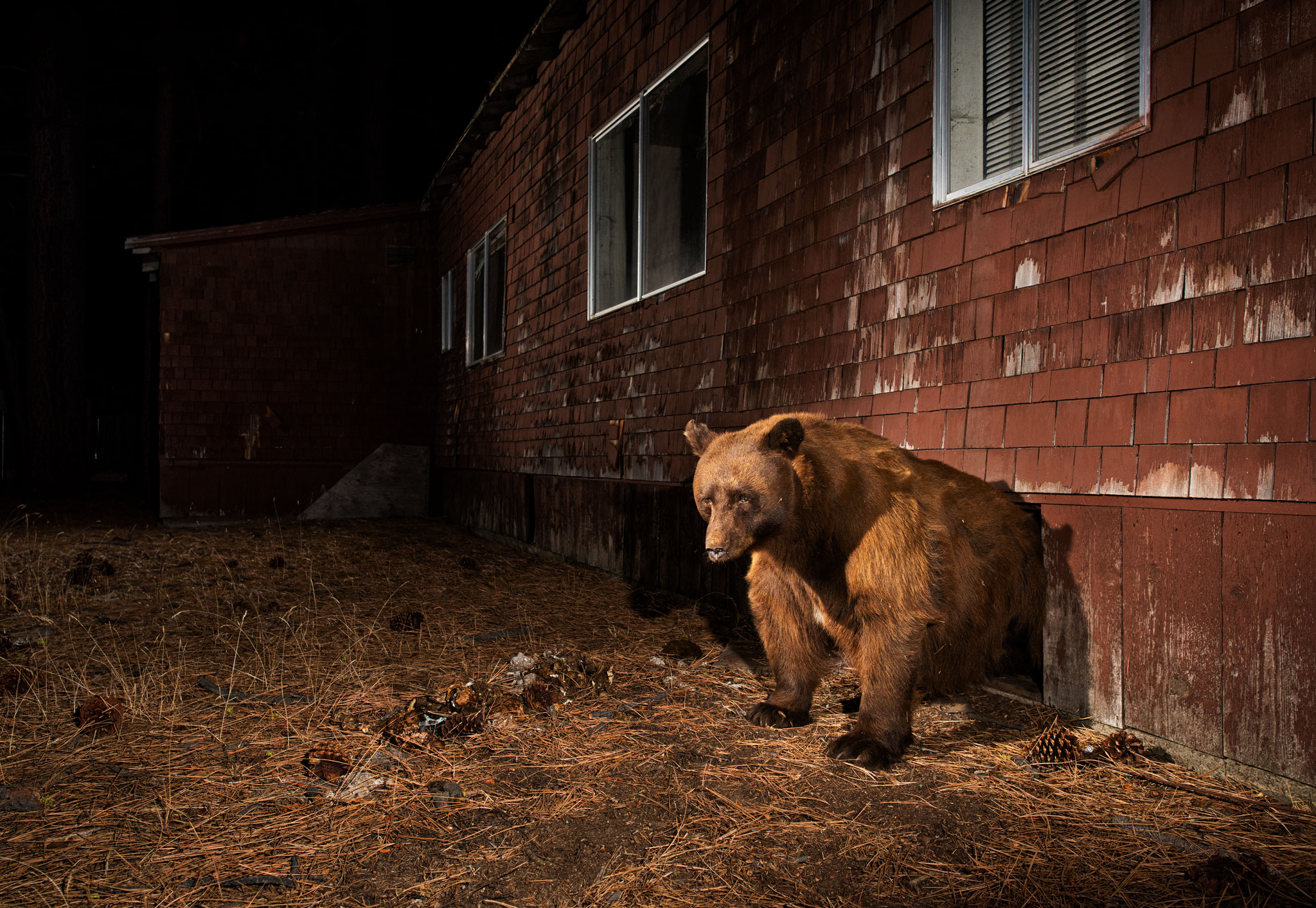



Around the 1990s, wildlife managers across North America started getting strange calls. Coyotes were trotting through city streets where they had never existed before. Bears were peeking inside living rooms. Raccoons seemed to be even peskier, easily getting into trash cans that had once thwarted them. Such species, it seemed, had discovered city and suburban living, and liked it. This is about a growing phenomenon of bold, scrappy carnivores that are learning to live, often quietly and undetected, among us.
So what happened? A confluence of factors came together to boost their populations, such as a dramatic decline in hunting, the explosion of resource-rich suburbs post-WWII, and destruction of native habitat due to urbanization.
Many of these urban survivors are thriving in greater numbers per square mile than their rural cousins—making it likely that these “cosmopolitan carnivores” are here to stay.
These photographs by Corey Arnold use a combination of camera traps and handheld cameras to show us where these animals live, navigate, and intersect with us. Arnold and writer Christine Dell’Amore teamed up with scientists and wildlife experts to gain local access and knowledge to better understand these urban populations.
Artist Bios
-
Corey Arnold
National Geographic Explorer Corey Arnold is a photographer and commercial fisherman exploring mankind’s complicated relationship with nature. His recent work documents how urban wildlife such as raccoons, coyotes, and bears are adapting to the human landscape in America. Arnold’s work has been exhibited extensively in galleries and museums worldwide, and his photography has been featured in Harper’s Magazine, the New Yorker, New York Times, National Geographic, Time, Outside, Smithsonian, and the Paris Review, among others. Arnold is based in the Columbia River Gorge in Washington, where he’s teaching his toddlers the fine art of rural animal tracking.
Organizations
-

National Geographic
Representing the largest brand on social media with over 780 million followers and 1.1 billion impressions each month, National Geographic Content’s award-winning and critically acclaimed storytelling inspires fans of all ages to connect with, explore, and care about the world through factual storytelling. National Geographic Content, part of a joint venture between The Walt Disney Company and the National Geographic Society, reaches over 532 million people worldwide in 172 countries and 33 languages as a digital, social, and print publisher and across the global National Geographic channels (National Geographic Channel, Nat Geo WILD, Nat Geo MUNDO), National Geographic Documentary Films, and direct-to-consumer platforms Disney+ and Hulu. Established in 1888, National Geographic is a trusted print and digital publication that creates visually stunning, richly reported photojournalism and distinguished, impartial coverage of the globe’s most pressing issues. Visit nationalgeographic.com and natgeotv.com or explore Instagram, Threads, Facebook, LinkedIn, YouTube, TikTok, and Reddit.
-

NYC Parks
NYC Parks is the steward of more than 30,000 acres of land — 14 percent of New York City — including more than 5,000 individual properties ranging from Coney Island Beach and Central Park to community gardens and Greenstreets. We operate more than 800 athletic fields and nearly 1,000 playgrounds, 1,800 basketball courts, 550 tennis courts, 65 public pools, 51 recreational facilities, 15 nature centers, 14 golf courses, and 14 miles of beaches. We care for 1,200 monuments and 23 historic house museums. We look after 600,000 street trees, and two million more in parks. We are New York City’s principal providers of recreational and athletic facilities and programs. We are home to free concerts, world-class sports events, and cultural festivals.
Urban Wildlife
Featuring: Corey Arnold
Locations
View Location Details Washington Street and Prospect StreetWashington Street and Prospect Street
DUMBO, Brooklyn 11201
Location open 24 hours

